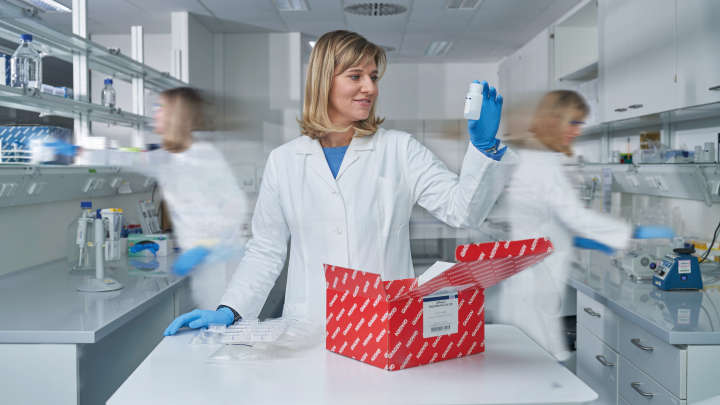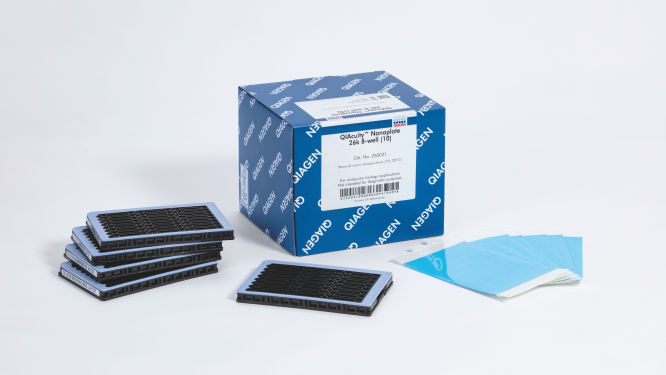✓ 24/7 automatic processing of online orders
✓ Knowledgeable and professional Product & Technical Support
✓ Fast and reliable (re)-ordering
QIAcuity Nanoplate 26k 8-well (10)
Cat no. / ID. 250031
✓ 24/7 automatic processing of online orders
✓ Knowledgeable and professional Product & Technical Support
✓ Fast and reliable (re)-ordering
Features
- Four nanoplates for different application needs
- Up to 8500 or 26,000 partitions per well
- SBS format
Product Details
The QIAcuity Nanoplates are microfluidic digital PCR plates that enable running 8, 24 or 96 samples with up to 8500 or 26,000 partitions per well. All four nanoplates are designed to run on the QIAcuity digital PCR instruments.
The nanoplates can only be used with the QIAcuity Digital PCR System. Use the dedicated QIAcuity Nanoplate Adapter when performing automated liquid handling and PCR setup in a QIAcuity Nanoplate using the QIAgility. Once done, load the plate onto the QIAcuity Digital PCR System for the dPCR reaction.
Would you like to learn more about the product and be contacted by one of our dPCR specialists? Sign in here, and we will get in touch with you shortly.
Performance
These are specially designed plates used for the digital PCR reactions in the QIAcuity instruments. QIAGEN offers four nanoplate types, all SBS format, but with different specifications for different application needs.
| Type | Frame color | Specifications | Applications |
| Nanoplate 26K 8-well | Light blue |
8-well x approx. 26,000 partitions 40 µl dPCR reaction per well |
Rare mutation detection, liquid biopsy, pathogen detection, etc. |
| Nanoplate 26K 24-well | Blue |
24-well x approx. 26,000 partitions 40 µl dPCR reaction per well |
|
| Nanoplate 8.5K 24-well | White |
24-well x approx. 8500 partitions 12 µl dPCR reaction per well |
Copy number variation analysis, gene expression analysis, NGS library quantification, genome edit detection, etc. |
| Nanoplate 8.5K 96-well | Gray |
96-well x approx. 8500 partitions 12 µl dPCR reaction per well |
Principle
In just 3 simple steps, you can have the dPCR result you want in under 2 hours: pipette and load, run the experiment, analyze results. The principle of the dPCR reaction in the nanoplates is described here.
Procedure
Just like in qPCR experiments, sample preparation includes the transfer of master mix, probes and primers to a 8-, 24- or 96-well nanoplate, followed by the addition of samples. The system integrates partitioning, thermocycling and imaging into a single fully automated instrument that takes users from the sample to result in under 2 hours. One can perform analysis on the Suite Software, providing the concentration in copies per microliter of your target sequence as well as for quality control such as positive samples or NTC. This analysis can also be extended to remote computers within the same local area network (LAN).
Applications
The QIAcuity Nanoplates, in combination with the QIAcuity Digital PCR System and the QIAcuity PCR kits, enable digital PCR applications, including:
- Rare mutation detection
- Copy number variation analysis
- Gene expression analysis
- Pathogen detection
- Genotyping
- miRNA research
- Cell and gene therapy
- Residual DNA quantification
- Waste water monitoring

